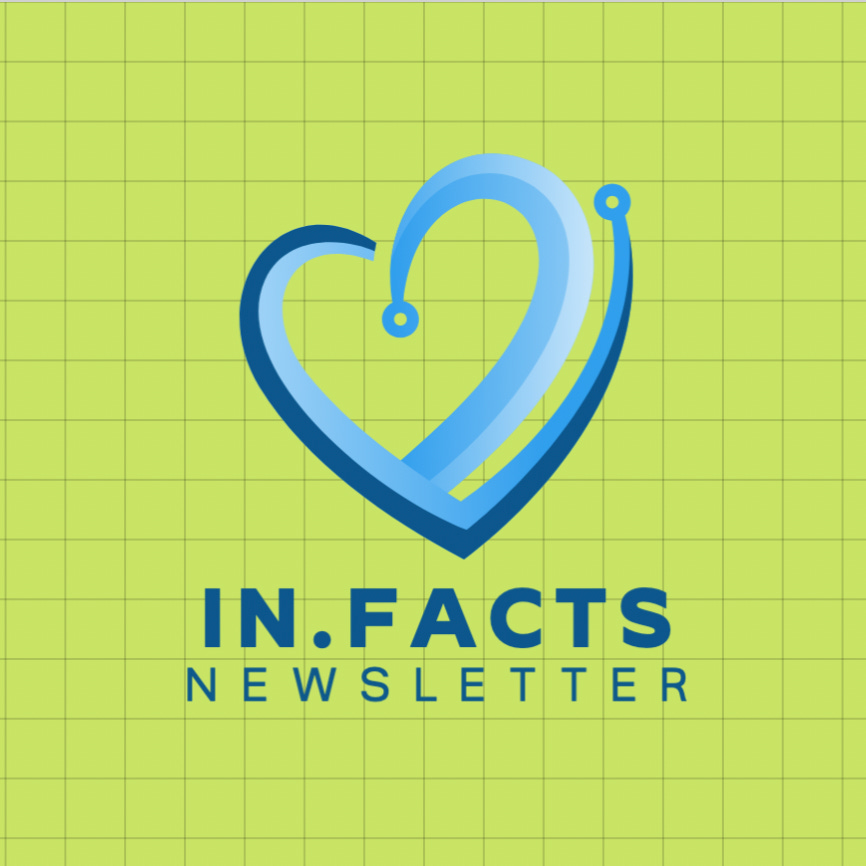Hello In.Facts readers!
Welcome to the latest edition of our In.Facts newsletter, "Under Pressure," where we delve into the world of hypertension. Blood pressure refers to the force exerted by blood against the walls of arteries as it flows through the body. Hypertension occurs when this pressure becomes consistently elevated, posing potential risks to our health.
Encountering a patient with elevated blood pressure evokes a mix of hope and responsibility within me. While I don't revel in their condition, it presents an opportunity to control and even reverse one of the most prevalent risk factors for cardiovascular diseases - the notorious "Silent Killer." It's not uncommon for patients to express disbelief, questioning how their blood pressure could suddenly be high when it has always been normal. The truth is, blood pressure can fluctuate within weeks or even days.
In cases where individuals without significant risk factors and only borderline or mildly elevated blood pressure are involved, I often recommend starting with powerful yet simple interventions: diet and exercise. These lifestyle changes can yield remarkable results, reducing blood pressure by 15-20mmHg. Embracing a low-sodium diet is particularly vital for hypertensive individuals, as table salt represents only a small fraction (7%) of our sodium intake. The bulk of our salt consumption comes from processed foods and dining out.
Blood pressure is measured using two numbers: systolic pressure (when the heart contracts) and diastolic pressure (when the heart relaxes between beats). A reading of 120/70 mmHg, for example, indicates a systolic pressure of 120 and a diastolic pressure of 70. Untreated high blood pressure can lead to organ damage, increasing the risk of heart failure, heart attacks, strokes, and kidney failure. Understanding different blood pressure levels is crucial.
While a blood pressure reading below 120/80 mmHg is considered normal, it's key to recognize the impact of even minor increases in blood pressure. Studies show that every 20 mmHg increase in systolic pressure or 10 mmHg increase in diastolic pressure doubles the risk of mortality from conditions such as ischemic heart disease and stroke. Therefore, if blood pressure remains elevated despite lifestyle modifications, medical therapy becomes the immediate and optimal next step.
As a physician, I can empathize with the concerns some patients have when it comes to starting medications. We often worry about potential side effects and the idea of being on medications indefinitely. However, when it comes to high blood pressure, the medication is often the better option compared to the risks of the disease itself. While it's true that certain medications may have unpleasant side effects, many of the first-line therapy options are generally well tolerated. Additionally, if the underlying cause of high blood pressure is successfully addressed and reversed in a significant number of patients, it may be possible to discontinue the medications under the careful supervision of a healthcare professional.
While the exact cause of primary hypertension remains unclear, certain risk factors have been identified, including age, obesity, family history, ethnicity (such as being of Black heritage), sodium consumption, alcohol consumption, and physical inactivity. In the United States, hypertension affects approximately 45% of adults, totaling around 108 million individuals. It stands as a leading cause of cardiovascular diseases and related deaths, contributing to over 500,000 fatalities annually. Treating hypertension is one of the most common reasons for office visits and the use of chronic prescription medications. It's concerning that roughly half of hypertensive individuals do not achieve adequate blood pressure control.
Checking blood pressure at home is as simple as purchasing an automatic blood pressure machine and pressing "start." These devices are reliable, storing and tracking readings for discussion with your doctor. Ensuring an appropriate cuff size for your arm is important, particularly for those with skinny arms or larger biceps.
I encourage you to take a moment and check your blood pressure if you haven't done so this year. If you find that it is elevated, it's important to consult your physician for further guidance. Making conscious food choices and incorporating regular exercise into your routine can have a significant impact not only on your blood pressure but also on other aspects of your health. By prioritizing these lifestyle changes, you can improve your cholesterol levels, regulate blood glucose, manage weight, enhance your sleep quality, and even boost your overall sense of happiness and well-being. So, let's take this step together towards a healthier and happier life!
Next week: “Running high”
Thank you for joining us on this heart-healthy journey. As always, if you have questions, suggestions, or topics you'd like to see covered, we're just an email away.
Here's to a healthy heart and a vibrant life!
Best regards,
Jaime Ghitelman
Editor, In.Facts
Thanks for reading In.Facts Newsletter! Subscribe for free to receive new posts and support my work.



I love that you share information with us to help us be proactively aware of things that could harm us. Thank you!